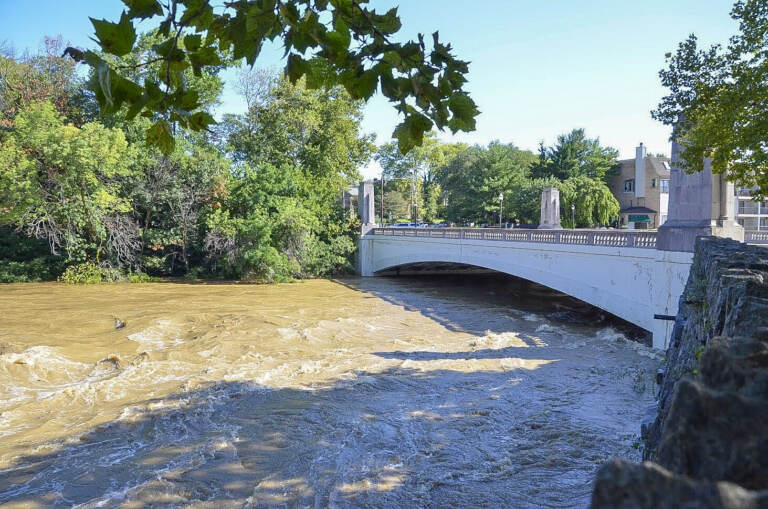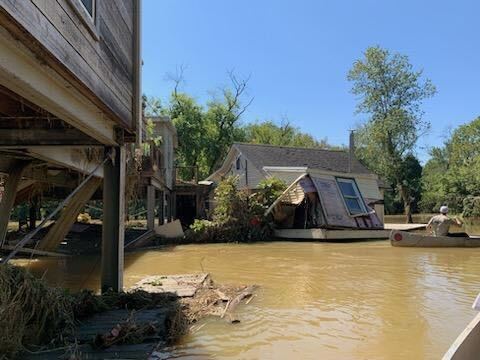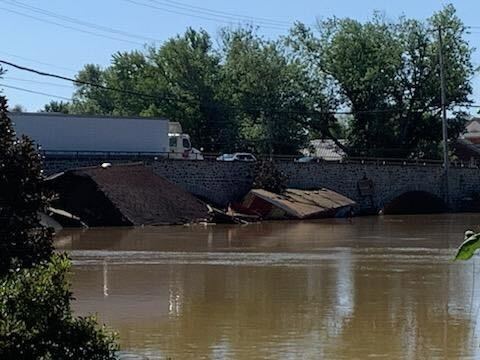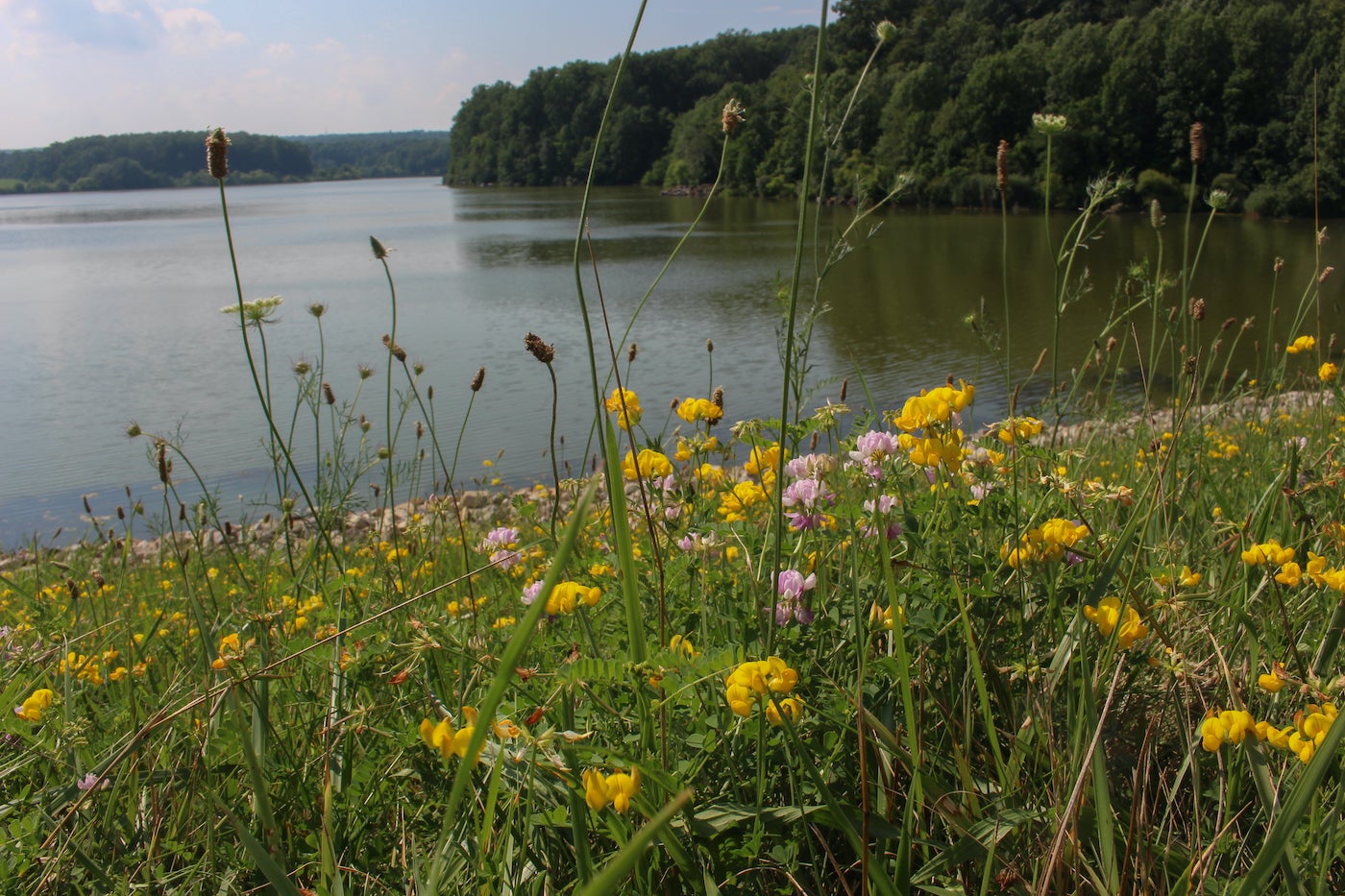New study to determine causes of flooding along Brandywine Creek
The remnants of Hurricane Ida caused the most intense flooding along the Brandywine Creek in 200 years.

The Brandywine River crested to record levels on Thursday. (City of Wilmington)
As the remnants of Hurricane Ida made its way through the region two years ago, Thomas McGrady decided to wait for the storm to pass. But as the water rose around his West Chester house along the Brandywine Creek, he and his family made a split-second decision.
In the pitch dark, McGrady, his daughter, and his nephew canoed across the creek, dodging downed power lines for about 20 minutes until they found higher ground.
“I was just afraid for everyone’s lives,” he said. “I knew once we committed to it, there was no turning back.”
McGrady and his family were witnessing the worst flooding that had occurred along Brandywine Creek in 200 years — with waters reaching as high as two stories in Chadds Ford. The flooding displaced hundreds of residents in parts of Wilmington, Del., and in Chester and Delaware counties, and caused $100 million in damages to public infrastructure.
The Chester County Water Resources Authority, the University of Delaware Water Resources Center, and the Brandywine Conservancy have teamed up to figure out what causes flooding along the Brandywine, and recommend mitigation strategies to protect residents and lessen property damage. The “Brandywine Flood Study” will be partly funded through grants from the Chester County government and Delaware County Council.
“The impact of Ida shows we must not only prepare for future floods, but invest in new ways to minimize the impacts,” said Josh Maxwell, vice chair of the Chester County Commissioners.
Over the last 20 years, there have been 129 flooding events in Chester County, resulting in more than $15 million dollars in damages, as well as deaths, he said. Rain events in the region have already worsened as a result of climate change. Climate scientists expect that trend to continue, putting an increasing number of residences and businesses at risk for flooding.
The study’s researchers will identify problems associated with the geography and hydrology of the creek, said Gerald Kauffman, director of the University of Delaware Water Resources Center. He said in some cases, bridges and dams prevent water from flowing freely.
“Incrementally, I think we can help thousands of people in the future,” Kauffman said. “It’s going to take time. It’s going to take some patience, and years of investment to really remove people from the floodplain and get their lives back to normal.”
The public will be informed about the study’s progress, and the results will be published in June 2024. w

Get daily updates from WHYY News!
WHYY is your source for fact-based, in-depth journalism and information. As a nonprofit organization, we rely on financial support from readers like you. Please give today.













